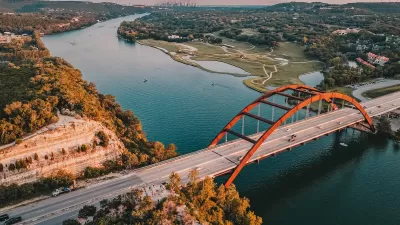Arguments over transportation policy often run as follows: HIGHWAY SUPPORTER: Highways pay for themselves! Buses/trains don't! So highways good and everything else bad bad bad! TRANSIT SUPPORTER: But highways create bad externalities like pollution and climate change! So if highways were taxed at their true cost gas would cost a zillion billion cajillion dollars per gallon! (followed by numerous counterarguments and counter-counterarguments that I won't bore you with, except as written below...) It seems to me that these arguments miss one point: even if the highway system as a whole pays for itself, the system is so chock full of cross-subsidies that each individual road doesn't (except for toll roads).
Arguments over transportation policy often run as follows:
HIGHWAY SUPPORTER: Highways pay for themselves! Buses/trains don't! So highways good and everything else bad bad bad!
TRANSIT SUPPORTER: But highways create bad externalities like pollution and climate change! So if highways were taxed at their true cost gas would cost a zillion billion cajillion dollars per gallon!
(followed by numerous counterarguments and counter-counterarguments that I won't bore you with, except as written below...)
It seems to me that these arguments miss one point: even if the highway system as a whole pays for itself, the system is so chock full of cross-subsidies that each individual road doesn't (except for toll roads).
Instead, one group of motorists is taxed to pay for projects that benefit another group of motorists.
For example, the interstate highway system was built from gas taxes paid by drivers on existing, pre-interstate roads.
Were these drivers the beneficiaries of the interstates? In rural areas, probably yes.
But in urban areas, only some of the urban drivers were helped by the interstates, while others were not.
Imagine, if you will, the city of Townsville (which could just as easily be Detroit, St. Louis etc). Townsville drivers pay a tax on their gasoline, which is used not to repair Townsville roads but to build an interstate that opens up
the suburb of Sprawlville for development. 10 percent of Townsville residents move to Sprawlville; 1 percent of Townsville residents have their home destroyed to build the interstate.
The 10 percent who move to Sprawlville get a windfall; they pay only 10 percent of the gas tax while the interstate is being built, but get most of the benefits (since they get new homes they like).
The 1 percent who have their homes destroyed are harmed quite a bit, because they lose their homes and neighborhoods (and usually are not compensated, especially if they are renters).
The other 89 percent (the people who want to stay in Townsville) may on balance have been harmed as well. Since they don't go to Sprawville they might not benefit very much from the highway. Also, their existing neighborhoods often declined because of the highway(s). When the 10 percent moved to suburbia, the 89 percent suddenly had vacant housing in their neighborhoods, housing that was usually filled by poorer people, often causing declining property values, worse schools, and increased crime. And if Sprawlville was a separate city, Townsville's tax base started to decline, causing higher taxes, making Townville less desirable.
So eventually many of the other 89 percent was forced out of Townsville by the highway, just as surely as if they had lost their homes to eminent domain.
In other words, users of new roads benefit from taxes paid by users of existing roads (who are not always the same people). The only way to avoid this problem is to make new roads toll roads and to close them down if they don't break even.

Planetizen Federal Action Tracker
A weekly monitor of how Trump’s orders and actions are impacting planners and planning in America.

Restaurant Patios Were a Pandemic Win — Why Were They so Hard to Keep?
Social distancing requirements and changes in travel patterns prompted cities to pilot new uses for street and sidewalk space. Then it got complicated.

Map: Where Senate Republicans Want to Sell Your Public Lands
For public land advocates, the Senate Republicans’ proposal to sell millions of acres of public land in the West is “the biggest fight of their careers.”

Maui's Vacation Rental Debate Turns Ugly
Verbal attacks, misinformation campaigns and fistfights plague a high-stakes debate to convert thousands of vacation rentals into long-term housing.

San Francisco Suspends Traffic Calming Amidst Record Deaths
Citing “a challenging fiscal landscape,” the city will cease the program on the heels of 42 traffic deaths, including 24 pedestrians.

California Homeless Arrests, Citations Spike After Ruling
An investigation reveals that anti-homeless actions increased up to 500% after Grants Pass v. Johnson — even in cities claiming no policy change.
Urban Design for Planners 1: Software Tools
This six-course series explores essential urban design concepts using open source software and equips planners with the tools they need to participate fully in the urban design process.
Planning for Universal Design
Learn the tools for implementing Universal Design in planning regulations.
Heyer Gruel & Associates PA
JM Goldson LLC
Custer County Colorado
City of Camden Redevelopment Agency
City of Astoria
Transportation Research & Education Center (TREC) at Portland State University
Camden Redevelopment Agency
City of Claremont
Municipality of Princeton (NJ)





























